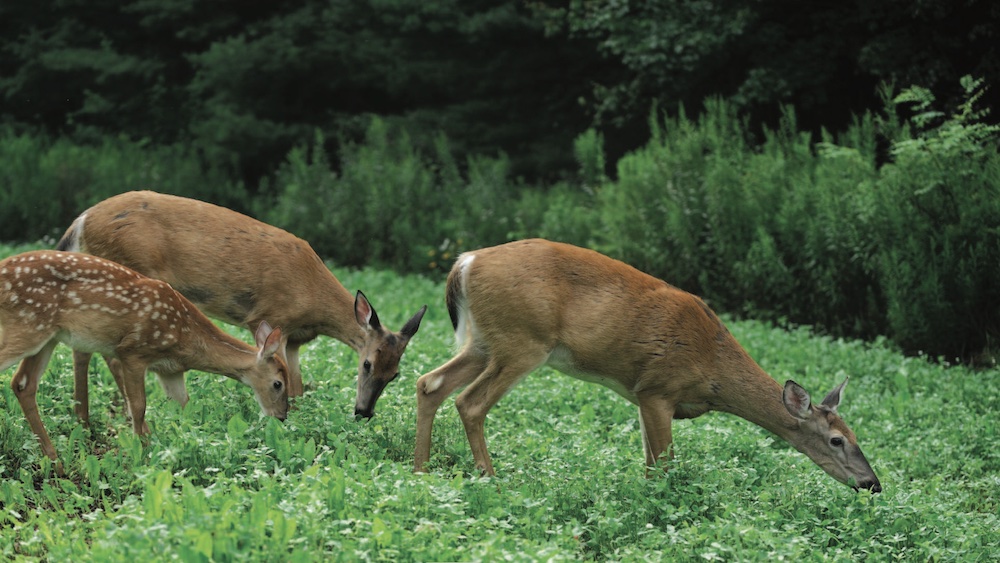GOOD THINGS COME IN SMALL PACKAGES
By: Jon Cooner

Every so often, I get a call or run into someone who wants to plant food plots for deer but believes he doesn’t have the room to do so. Usually, he thinks he doesn’t have enough open area on his property or that the property is too small. Whatever the reason, I always see such situations as a golden opportunity to do a little eye opening. The fact is, almost everyone can find a way and a location to plant food plots. All they have to do is alter their way of thinking.
If-Only Thinking:
Most of us have probably heard folks make statements such as, “If only… then I could.” You can fill in the blanks in many ways. Even so, the structure of the statement is the same. I call it ‘if-only thinking,’ and it’s a guaranteed path to failure because it means the speaker has decided not to try. You can see what I mean when you consider that if-only statements are really just another way of saying, “I can’t.”
Don’t get me wrong. I’ve been guilty of if-only thinking before, too, so I’m not throwing stones. If you think about it, though, the reason if-only thinking is so counterproductive is that it’s often based on assumptions that aren’t true. The key to getting ahead is to take a realistic look at your resources and set goals you can achieve with what you have. In fact, that’s exactly the approach to crafting any deer hunting or management plan, whether you hunt 10 acres or 10,000. Certainly, it’s possible to manage deer much more intensively on thousands of acres than on 100, and someone with only 10 acres will be managing just for hunting. Even so, it’s usually possible to make real improvements by making the most of what you have.
On small properties, your goal should be to increase the amount of time deer spend on your land as opposed to having them occasionally travel across it. Having the most-preferred food in the area, a source of water and helping deer feel secure on your property encourage deer to spend more time there, which will obviously increase your odds for success.
Look for Plantable Areas You Might Have Missed:
Here’s a big factor: Make sure your deer have attractive, nutritious and quality food. That, of course, leads me to food plots. You can usually find plantable areas on any property. Good examples include power lines, old home sites and pond dams, which are obvious plantable areas to most folks. So are logging roads and ATV trails. Try to find a stand site at a bend or corner in the road, and plant the road in both directions in Imperial Whitetail No-Plow or Secret Spot.
Your property likely has lots of other plantable areas that you might not have considered. One often overlooked area has become my favorite: spots within planted pines where the canopy is thin for some reason. Usually, these areas are fairly round or rectangular where two or three rows of trees haven’t grown well. These make excellent food plot sites because they’re often within heavy cover and give deer a feeling of security when using them during daytime. Imperial Whitetail No-Plow and Secret Spot are ideal for food plots in such small, out-of-the-way places.
If your property is very small, consider planting every open space you have. Occasionally, I get calls from folks with very small properties who are considering planting a tiny single food plot — for example, 20 feet by 20 feet. That’s only 400 square feet, which is so small deer can wipe it out very quickly. Consider, though, that if your property is very small and you plant several of these little areas, all of them together might act as a much larger single food plot.
Deer Must Feel Safe:
Your goal in improving the quality of hunting on your property, whether it’s large or small, is to bring deer to it and make them want to stay. Doing that has several important aspects. Most important, you must do your best to make sure deer feel safe on your property. Larger properties offer deer more distance between themselves and hunters, so the smaller your property is, the more care you’ll have to take making sure that you don’t overhunt it and that when you hunt it, you can get to and from your stand with minimal disturbance.
Remember, even if your property is very small, the same process applies to improving the quality of your hunting: You have to identify realistically what your situation is and then look for ways to make the most of it. Even on large properties, the best crafted management plans have to be tweaked after you see how deer react to it, so plant food plots where you can, keep pressure to a minimum and adjust as needed through time. You might be surprised at the results of your efforts!
